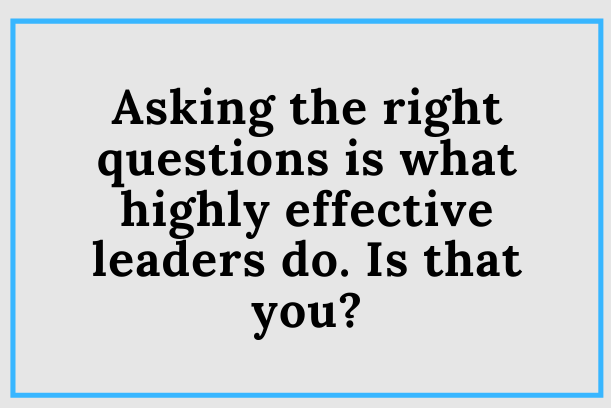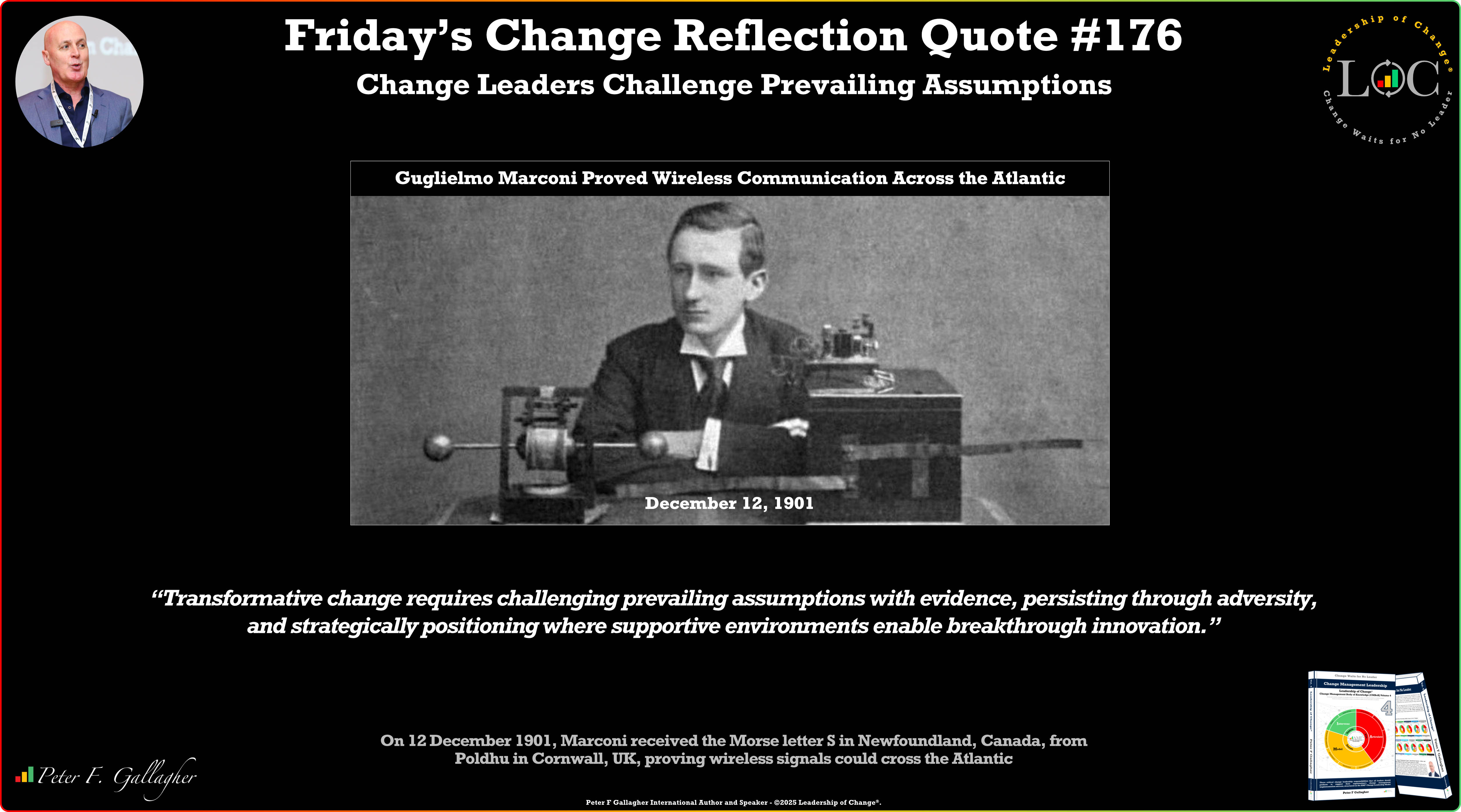Jul02

When a highly effective leader asks questions, they either want to learn something new for themselves, or they want to inspire their team to think differently and for themselves. So, when you go back to your team and you begin asking questions, always have those two things in mind.
You are not telling anybody what to do, you either want to learn, or you want to inspire self-thinking.
How do you do that? You may be asking. If you are seeking to learn new knowledge from your team then ask “why?” If you want to help your team to think differently and for themselves, then ask “how?”
Highly effective leaders are very skilled at asking these types of questions, and they are very deliberate with this technique. They either have a goal to learn, or a goal to help.
When asking the question of “how?” this can be very powerful when a new change is being implemented either within your team, or within the organisation. Asking “how?” enables you to be proactive, and embrace the change. Rather than reactive, and fear the change.
Most are reactive when it comes to change, so being proactive will put you and your team in the minority. However, it will put you and your team in a better position, and people will start to take notice. Especially your immediate senior leaders, and other senior leaders within your organisation.
As the leader of your team, reacting negatively to change, and fearing change will influence your team to react and behave in the same way. So you are negatively influencing, rather than positively influencing. This is something you need to avoid.
Leaders who react negatively to change are looking for the cons of the change, and don’t even consider the pros. Even if the pros outweigh the cons, a leader who fears change will still focus on the cons. When leaders behave in this way, they and their team will become a victim, rather than the recipient of change.
When you become the victim of any change, it will feel that the change is happening to you, rather than for you. When change happens to you, you will not have any control over the change, and neither will the team. Your team will feel like they have been manipulated, and if you cannot show leadership then this will create distrust.

If you are not thinking positively about this new change, then your negativity will flow into other aspects of your work.
Highly effective leaders embrace change, and they are proactive to change rather than reactive. When a highly effective leader embraces change, they are also embracing the responsibility that comes with it. By embracing, and accepting the responsibility, that is how they are proactive to the change.
Usually, when a new change is being brought in, people ask the obvious question of, “What is happening?” However, a highly effective leader’s first question to a new change begins with “How?” When asking “How?” you are seeking the solution from the very beginning, which is a lot more powerful than asking “What?”
Many times in my career, when a new change is about to come into the organisation, you always hear the same questions from the negative people. Whether they are the leaders, or the team, they are always the same as the following:
These types of questions are a reaction to a new change, and is a very negative response.
When a highly effective leader and their team embrace a new change, they turn the questions around, and will ask the following:
As you can see, just putting the word “How?” at the beginning of the questions, gives a whole different perspective on yours and your team’s way of thinking. It completely changes your way of thinking from negative and reactive, to positive and proactive.
A new change usually means a different way of being and behaving. So, we must accept the responsibility that comes with this new way of being.
Leveraging the question of “How can I?” or “How can we?” rather than, “Can I?” or “Can we?” is how highly effective leaders embrace and accept the responsibility, and lead themselves and their team through positive change.
Highly effective leaders have no doubt that the change they are leading is the right thing to do.

When a low performing leader asks the question, “Can I?” they are doubting themselves already, and being negative. There is no substance to the question “Can I?” so you don’t know whether you can or you can’t.
However, when a highly effective leader asks, “How can I?” they are making a commitment, and have made the decision that they can make this change happen, no matter what.
When this commitment is made, the only thinking you will do will be in a positive direction, and if you come up against any obstacles, you will find the solution to remove them. The word “How?” puts you and your team on the right path.
When you are thinking positively about any type of change, whether that be in work or at home, you will always find a solution. There may be more than one solution, but you will think of them all and decide on the best one. Just by using the word how. Teach your team to do the same thing, and they will start thinking in this way too.
Low performing leaders will always be the victim to change, and because they play the victim they will feel stuck. It is like they are stuck with the change, instead of embracing the change.
When a highly effective leader embraces the change, they will feel unstuck and creative. They see the change as a benefit for all, and do everything they can to ensure the change is seen through to the end.
When it comes to a new change being brought in for your team, department or organisation, then ask yourself the “How can I?” and “How can we?” questions above. See for yourself how different you will be thinking, and how different you feel. You will feel a lot more positive and accepting of the new change.
Then, once you have asked yourself, and the team has asked themselves these positive questions, ensure you take positive action. Don’t just ask the questions and do nothing. Take positive action and see what happens.
You and your team will start to devise solutions for obstacles, rather than just coming up with obstacles that you don’t do anything about. Train your team to put “How?” in front of “Can I?” and feel the difference from being reactive to proactive.
I welcome hearing how this post has influenced the way you think, the way you lead, or the results you have achieved because of what you’ve learned in it. Please feel free to share your thoughts with me by commenting below.
All the best,
By Tom Lawrence
Keywords: Culture, Leadership, Transformation
 Data Isn’t the Problem. Alignment Is.
Data Isn’t the Problem. Alignment Is. Friday’s Change Reflection Quote - Leadership of Change - Change Leaders Challenge Prevailing Assumptions
Friday’s Change Reflection Quote - Leadership of Change - Change Leaders Challenge Prevailing Assumptions The Corix Partners Friday Reading List - December 12, 2025
The Corix Partners Friday Reading List - December 12, 2025 Measuring the True ROI of Automated Claims Processes: Beyond Speed and Cost
Measuring the True ROI of Automated Claims Processes: Beyond Speed and Cost The New Silicon Frontier: Specialization and the Diverse Landscape of AI Chips
The New Silicon Frontier: Specialization and the Diverse Landscape of AI Chips